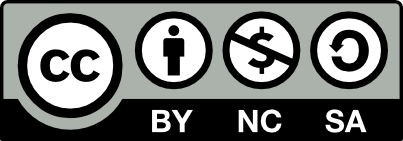Gelatin/chitosan delivery system improves stability and regenerative potential of Ca(OH)2 in an open dental pulp model

Calcium hydroxide (Ca(OH)2) has a long history as an agent to induce hard tissue regeneration in teeth. However, its high solubility requires inefficient repeated applications. Its alkalinity has two-sided effects: antibacterial property, but simultaneously compromises cell viability. This study prepared a composite of gelatin/chitosan to deliver Ca(OH)2 using tetraethyl orthosilicate (TEOS) as the crosslinker. The chemical and physical properties of the composite were compared with unmodified Ca(OH)2 aloneusing Fourier-transform infrared spectroscopy, X-ray diffraction, and scanning electron microscopy with energy-dispersive X-ray spectroscopy, followed by an investigation into the release or dissolution of Ca2+ from both materials. A total of 16 Wistar rats were allocated to receive either the composite or Ca(OH)2 after dental pulp exposure. Regenerative potential was assessed after 7 and 14 days by histological evaluation of odontoblast-like cell numbers and transforming growth factor β1 (TGF-β1) expression, with statistical analysis performed at a 95% confidence level. The gelatin/chitosan/Ca(OH)2/TEOS composite was successfully synthesized and exhibited controlled Ca2+ release. The results demonstrated a higher odontoblast-like cell proliferation and stronger TGF-β1 expression in the composite-treated group after 7 days of application, indicating a more intensive regeneration than the Ca(OH)2 control. After 14 days, the number of odontoblast-like cells in both groups did not differ significantly. However, TGF-β1 expression was significantly more pronounced. In conclusion, the incorporation of Ca(OH)2 into a gelatin/chitosan matrix using TEOS as a crosslinker successfully decreases its solubility without impairing the ability to induce dental pulp regeneration.
- Li C, Yu C, Chen H. Global, regional, and national caries of permanent teeth incidence, prevalence, and disability-adjusted life years, 1990- 2021: Analysis for the global burden of disease study. BMC Oral Health. 2025;25(1):715. doi: 10.1186/s12903-025-06086-z
- Shah A, Peacock R, Eliyas S. Pulp therapy and root canal treatment techniques in immature permanent teeth: An update. Br Dent J. 2022;232(8):524-530. doi: 10.1038/s41415-022-4139-4
- Angelova Volponi A, Zaugg LK, Neves V, Liu Y, Sharpe PT. Tooth repair and regeneration. Curr Oral Health Rep. 2018;5(4):295-303. doi: 10.1007/s40496-018-0196-9
- Islam R, Islam MRR, Tanaka T, Alam MK, Ahmed HMA, Sano H. Direct pulp capping procedures-Evidence and practice. Jpn Dent Sci Rev. 2023;59:48-61. doi: 10.1016/j.jdsr.2023.02.002
- Silva EJNL, Pinto KP, Belladonna FG, Ferreira CMA, Versiani MA, De-Deus G. Success rate of permanent teeth pulpotomy using bioactive materials: A systematic review and meta-analysis of randomized clinical trials. Int Endod J. 2023:56(9):1024-1041. doi: 10.1111/iej.13939
- Elhamouly Y, Adham MM, Dowidar KML, El Backly RM. Outcome assessment methods of bioactive and biodegradable materials as pulpotomy agents in primary and permanent teeth: A scoping review. BMC Oral Health. 2024;24(1):496. doi: 10.1186/s12903-024-04221-w
- Mahmudi M, Nuryono N, Pidhatika B, Suyanta S. Synthesis of bioactive membranes for guided tissue regeneration (GTR): A comparative study of the effect silane-based cross-linker. Rasayan J Chem. 2022;15(1):102-107. doi: 10.31788/RJC.2022.1516435
- Mahmudi M, Ardhani R, Pidhatika B, et al. Development of a local drug delivery system for promoting the regeneration of infective bone defect: Composite films with controlled properties. Polym Bull (Berl). 2024;81(12):11215-11238. doi: 10.1007/s00289-024-05243-8
- Li XL, Fan W, Fan B. Dental pulp regeneration strategies: A review of status quo and recent advances. Bioact Mater. 2024;38:258-275. doi: 10.1016/j.bioactmat.2024.04.031
- Handajani J, Ardhani R, Pidhatika B, et al. Evaluation of the expression of nestin in the pulp after application of gelatin-chitosan-tetraethyl orthosilicate calcium hydroxide composite. Malays J Med Health Sci. 2024;20(Supp5):29-34.
- Abdulrahman AG, Endytiastuti E, Ardhani R, et al. Evaluating the efficacy of gelatin-chitosan-tetraethyl orthosilicate calcium hydroxide composite as a dental pulp medicament on COX-2, PGP 9.5, TNF-α expression and neutrophil number. F1000Res. 2025;13:1258. doi: 10.12688/f1000research.156336.2
- Baldión PA, Velandia-Romero ML, Castellanos JE. Odontoblast-like cells differentiated from dental pulp stem cells retain their phenotype after subcultivation. Int J Cell Biol. 2018;2018(1):6853189. doi: 10.1155/2018/6853189
- Bai Y, Cheng X, Liu X, et al. Transforming growth factor-β1 promotes early odontoblastic differentiation of dental pulp stem cells via activating AKT, Erk1/2 and p38 MAPK pathways. J Dent Sci. 2023;18(1):87-94. doi: 10.1016/j.jds.2022.06.027
- Arifin WN, Zahirudin WM. Sample size calculation in animal studies using resource equation approach. Malays J Med Sci. 2017;25(5):101-105. doi: 10.21315/mjms2017.24.5.11
- Khachani M, Hamidi AE, Halim M, Arsalane S. Non-isothermal kinetic and thermodynamic studies of the dehydroxylation process of synthetic calcium hydroxide Ca(OH)2. J Mater Environ Sci. 2014;5(2):615-624.
- Michelot A, Sarda S, Audin C, et al. Spectroscopic characterisation of hydroxyapatite and nanocrystalline apatite with grafted aminopropyltriethoxysilane: Nature of silane-surface interaction. J Mater Sci. 2015;50(17):5746-5757. doi: 10.1007/s10853-015-9122-x
- Ardhani R, Suraya T, Wulanjati MP, Ana ID, Rühe J, Pidhatika B. Photoreactive polymer and C,H-insertion reaction to tailor the properties of CHA/gelatin-based scaffold. Int J Polym Anal Charact. 2022;27(5):326-345. doi: 10.1080/1023666X.2022.2076012
- Sahadat Hossain M, Jahan SA, Ahmed S. Crystallographic characterization of bio-waste material originated CaCO3, green-synthesized CaO and Ca(OH)2. Result Chem. 2023;5:1-8. doi: 10.1016/j.rechem.2023.100822
- Tanpure S, Ghanwat V, Shinde B, Tanpure K, Lawande S. The eggshell waste transformed green and efficient synthesis of K-Ca(OH)2 catalyst for room temperature synthesis of chalcones. Polycycl Aromat Compd. 2022;42(4):1322-1340. doi: 10.1080/10406638.2020.1776740
- Shweta K, Jha H. Synthesis and characterization of crystalline carboxymethylated lignin-TEOS nanocomposites for metal adsorption and antibacterial activity. Bioresour Bioprocess. 2016;3(1):1-16. doi: 10.1186/s40643-016-0107-7
- Kilic S, Toprak G, Ozdemir E. Stability of CaCO3 in Ca(OH)2 solution. Int J Miner Process. 2016;147:1-9. doi: 10.1016/j.minpro.2015.12.006
- Aliasghari A, Rabbani Khorasgani M, Vaezifar S, Rahimi F, Younesi H, Khoroushi M. Evaluation of antibacterial efficiency of chitosan and chitosan nanoparticles on cariogenic streptococci: An in vitro study. Iran J Microbiol. 2016;8(2):93-100.
- Akca G, Özdemir A, Öner ZG, Şenel S. Comparison of different types and sources of chitosan for the treatment of infections in the oral cavity. Res Chem Intermed. 2018;44(8):4811-4825. doi: 10.1007/s11164-018-3338-8
- Nageeb WM, Adam SH, Hashem N, Abdelsalam N. In-vitro and In-silico evaluation of antimicrobial and antibiofilm effect of Neem oil and Calcium hydroxide nanoparticles against Mutans Streptococci and Enterococcus faecalis isolated from endodontic infections. Sci Rep. 2024;14(1):26441. doi: 10.1038/s41598-024-75669-7
- Mahran AH, Fahmy SH, Ibrahim SS. Evaluation of stem cell differentiation medicated with calcium phosphate nanoparticles in chlorohexidine paste. Bull Natl Res Cent. 2023;47(1):37. doi: 10.1186/s42269-023-01011-2



